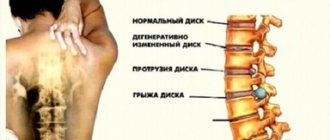Physical activity is invaluable for the formation and maintenance of human health, because it directly affects the development and functioning of the heart and blood vessels, lungs and musculoskeletal system, nervous system, helps reduce stress and improve mood and sleep. And now more about this - in numbers, conclusions of scientists and comments from a category 1 doctor, obstetrician-gynecologist Zoya Gennadievna Vylegzhanina.
A large 2016 meta-study on the topic of physical activity among expectant mothers showed that regular moderate physical activity during pregnancy is good for the health of both the woman and the child, and has a prolonged effect already in the postpartum period (1).
Overall, exercise reduces the risk of chronic disease in both mother and child. Physically active expectant mothers have improved cardiovascular health, are less likely to gain weight after pregnancy, are more likely to experience an easy and relatively quick birth, recover more quickly and generally feel better. This is evidenced by a study conducted at Case Western Reserve University (Cleveland, Ohio, USA) (2).
Babies of physically active mothers develop faster than their peers and grow up to be more stress-resistant. Researchers note that women who engage in light physical activity during pregnancy are more likely to have children with normal height and weight (3,4). The results were published in the journal Clin Med Insights Womens Health.
Also, the physical activity of the mother affects the variability of the child’s heart rate. This indicator reflects changes in heart rhythm and indicates the maturity of the autonomic nervous system of the heart. The results persist even after birth. This is evidenced by a study by Kansas scientists published in Early Human Development (5). In addition, these children showed no signs of CVD in adulthood (according to the results of a 20-year study published in Medicine & Science in Sports & Exercise (6).
Finally, babies whose mothers were engaged in physical education were ahead of their peers in psychomotor and speech development already at the age of 8-12 months. Studies have shown a good level of development of neuromotor skills (7), cognitive function (8) and intelligence quotient (9) in such children. The measurements used were the Brazelton Scale (for behavioral assessment of newborns) and the Bayley Scale (for assessment of early infant development).
What can an expectant mother do?
Physical activity should bring joy and pleasure, and the feeling of fatigue should be pleasant and comfortable. During classes, the brain should rest, and consciousness should become bright and transparent.
Physical activity during pregnancy should be moderate and regular.
“ Regular means at least 2 times a week, lasting 30-45 minutes. Optimally - 20-30 minutes a day. Those who were actively involved in sports before pregnancy can continue exercising. However, it is important to remember that with exercise for more than 45 minutes, pregnant women may develop hypoglycemia (low sugar levels), so you should not exercise on an empty stomach! It is better to eat 1 hour before class. The golden rule for the first trimester: perform up to 80% of the workload you handled before pregnancy. In the second and third trimester - focus on your well-being, do not overdo it.
Moderate means lasting 30-40 minutes; during exercise, a feeling of warmth and slight shortness of breath should appear. The heart rate may increase (however, during pregnancy, the cardiovascular system undergoes changes, so you should not focus on a normal pulse, as in the pre-pregnancy state).
An excellent indicator of the level of physical activity is the “conversation test” - if a pregnant woman can carry on a conversation during physical activity, then such a load is considered adequate. The main criterion for moderation of physical activity is a subjective assessment of one’s condition. You can exercise until you are pleasantly tired, but in no case to the point of exhaustion!
If a woman did not engage in any sports before pregnancy, she should start with a minimal load - for example, walking in the fresh air, at a comfortable pace. This is the simplest and most accessible sport. But try not to walk for too long - more than 45-60 minutes. Take a bottle of water with you and wear comfortable clothes” (obstetrician-gynecologist Z.G. Vylegzhanina).
Rumyantseva, md.
Pregnancy is not a disease! Therefore, a pregnant woman who led a healthy lifestyle before pregnancy (healthy eating, exercise, no bad habits) must continue in the same spirit during pregnancy. If your lifestyle before pregnancy was far from ideal, then pregnancy is the time to change it for the better!
Physical activity is an integral component of a healthy lifestyle, both during pregnancy and outside of it.
This is why it is necessary to continue to exercise if you did it before pregnancy. Moreover, it is worth thinking about physical activity, even if you did not engage in any sport before pregnancy (no doubt, starting with minimal exercise). It has been repeatedly proven that physical activity during pregnancy has a beneficial effect on the course of pregnancy and childbirth.
For the average healthy woman, 2.5 hours of moderate-intensity aerobic activity (such as brisk walking) per week is recommended during pregnancy and throughout the postpartum period. If a woman was involved in sports before pregnancy and practiced more intense physical activity (for example, running), she can continue to do it after consultation with a doctor and in the absence of contraindications to sports during pregnancy.
Lack of physical activity during pregnancy, as well as excess weight of a pregnant woman, are risk factors for many obstetric complications, including gestational diabetes mellitus.
There is an opinion that physical activity can lead to miscarriages, fetal growth retardation, and premature birth. This is a myth, and scientific studies have repeatedly shown that these complications are not associated with the physical activity of a healthy pregnant woman who has no contraindications to exercise.
Benefits of exercise during pregnancy.
It has been proven that training during pregnancy does not harm the woman and child (if there are no contraindications to sports), but on the contrary, provides a number of benefits for mother and baby:
- reducing the likelihood of developing gestational diabetes (if diabetes does develop, glucose levels are lower in women who exercise);
- reducing the likelihood of developing preeclampsia (preeclampsia);
- reducing the frequency of births by caesarean section;
- reducing the frequency of deliveries using vacuum aspiration or forceps;
- faster recovery after childbirth;
- less weight gain during pregnancy;
- If you have lower back pain, a variety of activities in the water (swimming, aqua aerobics, aqua yoga) reduce the severity of the pain syndrome.
If we talk about the negative side of training during pregnancy, it has been shown that intense exercise during pregnancy can cause contraction of the muscles of the uterus (cramping pain in the lower abdomen), but this effect does not lead to an increase in the frequency of premature births in women involved in sports.
Fetal reaction to mother's training
Numerous studies have shown that a fetus can respond to a pregnant woman's exercise by increasing her heart rate by 10 to 30 beats per minute. These changes quickly return to baseline after cessation of training.
An increase in heart rate does not lead to any significant changes in the fetus and does not have a negative effect on its development.
Only one study has been conducted that evaluates not only heart rate, but also many other parameters that evaluate the condition of the fetus during the mother's exercise (blood flow in the umbilical cord artery and other biophysical indicators). In this study, women exercised very actively in the second trimester of pregnancy (including strength training, but for no more than 30 minutes per day). There was also no negative effect of intense stress on the fetus.
An important parameter for assessing the condition of a child is his birth weight. It has been found that on average, women who continue to actively train in the third trimester of pregnancy give birth to children 200-400 grams less than those women who did not train at all during pregnancy. It is worth noting that the children were not diagnosed with intrauterine growth retardation, and their birth weight did not exceed the lower limit of normal.
Features of physical activity during pregnancy
During pregnancy, anatomical and physiological changes occur in a woman’s body, which should be taken into account when playing sports.
The main ones are an increase in body weight and a shift in the center of gravity (as a result, a greater severity of lumbar lordosis). This increases the load on all joints, including the spine. This is worth considering during strength training.
Up to 60% of pregnant women experience back pain when exercising during pregnancy.
If pain occurs, it is necessary to abandon activities that require lifting any weights, replacing them with exercises aimed at strengthening the muscles of the back and abdominals.
During pregnancy, the following parameters increase: circulating fluid volume, heart rate, stroke volume and cardiac output. At the same time, the total peripheral vascular resistance decreases. These hemodynamic changes are aimed at creating a “reserve”, which allows the woman and fetus to be provided with the necessary substances both at rest and during physical activity. These features dictate the need to avoid static loads during pregnancy, because these loads reduce venous return and can lead to hypotension (low blood pressure) in 10-20% of pregnant women (in particular, some yoga asanas, as well as any exercises that require lying on your back for a long time).
Changes in the organs of the respiratory system (an increase in the minute volume of ventilation by 2 times) lead, on the one hand, to difficulties during anaerobic exercise, and on the other, to a “delayed” supply of oxygen during aerobic exercise (in particular, if a pregnant woman increases the load) . In this regard, both anaerobic and aerobic exercise can be much harder for a pregnant woman than before pregnancy.
Many women have to give up strength training during pregnancy (or don’t start doing it if they haven’t trained before and are overweight). Moderate aerobic exercise is beneficial for a pregnant woman, but it is necessary to carefully monitor your condition during training and stop it if you have difficulty breathing or feel a lack of oxygen.
During pregnancy, thermoregulation mechanisms also suffer. In this regard, a pregnant woman needs to avoid overheating and dehydration. To do this, you need to drink enough water during training, avoid training in the open sun or in a poorly air-conditioned room. It is interesting to note that overheating, such as in a sauna, can lead to some complications during pregnancy. Overheating, which inevitably accompanies physical activity, does not have such an effect.
Despite significant changes in the anatomy and physiology of a pregnant woman, physical activity during pregnancy carries virtually no risks for a healthy pregnant woman. Thus, in many scientific studies, the main complications after fitness classes during pregnancy were only minor injuries and sprains. Undoubtedly, you should be as attentive as possible to yourself during training in order to avoid these complications!
Creating a training program during pregnancy
As soon as you find out you are pregnant, please consult your doctor before starting or continuing to exercise.
The optimal duration of training is 20-30 minutes daily; this option is much more favorable than 2 hours of training once a week. The duration and intensity of training may be significantly higher in women who were actively involved in sports before pregnancy. However, it is worth remembering that aerobic training lasting more than 45 minutes can lead to hypoglycemia (lack of glucose in the blood), and therefore it is necessary to eat well before such training. Obviously, women who did not exercise before pregnancy should begin activity with minimal exercise, gradually increasing it during pregnancy.
Types of physical activity allowed during pregnancy:
- Walking
- Swimming
- Exercise bike
- Low intensity aerobic exercise
- Yoga (adapted)
- Pilates (adapted)
- Run*
- Tennis, badminton*
- Power training*
*only for those who were actively involved in these sports before pregnancy; exercises under the supervision of a doctor.
Types of physical activity to avoid during pregnancy:
- Contact sports (hockey, boxing, football, basketball)
- Sports with an increased risk of injury (alpine skiing/snowboarding, water skiing, surfing, cycling, horse riding)
- Diving
- Parachuting
- "Hot" yoga.
Exercise during pregnancy should be moderate; it is better to avoid too intense aerobic and anaerobic training. Due to the changes that occur in a woman's cardiovascular system during pregnancy, monitoring heart rate to determine exercise adequacy is not recommended. Therefore, a woman has to evaluate her condition subjectively, training until she is tired, but not exhausted. There is also a “conversation test” that allows you to determine the level of exercise: the load is considered adequate for a pregnant woman as long as she can carry on a conversation during exercise.
During training, you need to consume plenty of fluid. Overheating and dehydration are unacceptable! You also need to be attentive to your condition and stop training if any “dangerous” signs appear.
“Dangerous” signs, if they appear, you should stop any physical activity and consult a doctor:
- Bloody discharge from the genital tract
- Cramping pain in the lower abdomen
- Suspicion of leakage of amniotic fluid (watery discharge from the genital tract)
- Dyspnea at rest
- Headache
- Chest pain
- Muscle weakness/cramps
- Pain in the calf muscles/severe swelling of the legs
You must always remember that you need to train in a well-conditioned room or in the fresh air at a comfortable temperature. In such a situation, overheating is practically excluded (the rise in body temperature in such conditions is about 1.5 degrees per 30 minutes of exercise, which is within the norm and does not harm the woman and child).
Contraindications to physical activity during pregnancy
If a pregnant woman has any obstetric or any other diseases, she should definitely discuss the possibility of playing sports and the intensity of exercise with her doctor.
Absolute contraindications (you cannot play sports throughout pregnancy):
- Diseases of the cardiovascular system, accompanied by hemodynamic disorders (changes in the heart and blood vessels, for example, high blood pressure, changes in cardiac output, etc.);
- Obstructive pulmonary diseases;
- Isthmic-cervical insufficiency (a condition in which the cervix shortens and begins to open earlier than expected, diagnosed by ultrasound);
- Multiple pregnancy, accompanied by a risk of premature birth;
- Bleeding from the genitals;
- Placenta previa;
- Threat of premature birth;
- Rupture of membranes;
- Preeclampsia (preeclampsia) or pregnancy-associated hypertension;
- Severe anemia (hemoglobin level less than 70 g/l).
Relative contraindications (low-intensity sports are possible under strict medical supervision):
- Anemia;
- Arrhythmia;
- Chronical bronchitis;
- Diabetes mellitus type 1;
- Obesity;
- Wasting (BMI below 12);
- Sedentary lifestyle before pregnancy;
- Fetal growth restriction;
- Hypertension (existing before pregnancy);
- Orthopedic pathology;
- Neurological pathology;
- Hyperthyroidism;
- Smoking.
Let's sum it up
Pregnancy is not a disease, and physical activity during pregnancy is not only not harmful, but beneficial for most pregnant women.
Undoubtedly, moderation in exercise during pregnancy is needed, but there is no point in stopping sports if there are no contraindications to physical activity. If you didn’t follow a healthy lifestyle before pregnancy, perhaps it’s time to start when you see the coveted two stripes. This way you can provide the best for your baby, as well as show him a worthy example of a healthy life in the future.
Enjoy your training!
Source: Physical Activity and Exercise During Pregnancy and the Postpartum Period, ACOG, 2015
Similar
Facebook comments
What else can you try:
- It is worth paying attention to training the muscles of the pelvic floor and perineum to improve elasticity and firmness. The ability to control these muscles (tighten and relax them) is great for preventing soft tissue ruptures during childbirth and for faster and better recovery after childbirth.
- Water aerobics . Any exercise trains muscles, since water is denser than air and you will have to overcome its resistance. Water procedures, in addition, are an excellent prevention of stretch marks, as they perfectly massage and strengthen the tissue. You can exercise both in a shallow pool and at depth.
- Swimming . Water cools, soothes and makes the body lighter. You will temporarily stop feeling its weight and relax. However, it is better to swim breaststroke or on your back so as not to overstrain your muscles.
- Stretching (stretching) . These exercises will help you relax your muscles and feel more confident, and will also be a good way to manage pain (this skill will come in handy during childbirth). However, if you are not studying individually, but in a group, be sure to inform the instructor about your pregnancy, since not all poses are allowed for expectant mothers!
- Yoga will help strengthen the spine and develop joints. But avoid inverted poses - they are not suitable for pregnant women!
- Fitball exercises . Even if you just sit on the ball, you have to maintain balance: the spine works, coordination of movements develops, and muscles become stronger.
- Dancing for pregnant women . The Dancing for Birth technique was specially developed by midwives. These are adapted movements from Oriental, African, Latin American, Caribbean and other dances of the world. They provide a balanced load, lift your spirits and help prepare for childbirth. You can also give birth while dancing! (CTA has a certified specialist in this method - obstetrician Alla Yevtushenko).
In addition, during pregnancy, thermoregulation changes, which means that overheating and dehydration develop much faster. Therefore, during training it is necessary to drink enough water and exercise in a well-ventilated and air-conditioned room.
If you find it difficult, adjust the exercise. There is no need to torture yourself! If you feel anything unusual during the process, stop the exercise very slowly, walk around and breathe for a few minutes. If symptoms continue, contact your doctor.
When should you start training?
During the first trimester, a girl should carefully monitor her own condition and monitor the development of the fetus. Since in the first 12 weeks the fertilized egg has not yet attached tightly enough to the wall of the uterus and the placenta has not fully formed, there is a risk of miscarriage. Therefore, training, and especially strength training, is not recommended at this time.
Photo: istockphoto.com
But if the expectant mother is absolutely healthy and has previously exercised regularly, you can carefully start exercising from the first trimester, following safety rules.
What physical activities should be avoided during pregnancy:
- Weight lifting exercises. Strength training should not be started if you did not do it before pregnancy. If you have trained previously, then it is possible to continue training (but reduce the level of load, pace and weight) and carefully listen to your feelings. If you experience difficulty breathing or a feeling of lack of air, you need to stop such training immediately!
- Exercises to strengthen your back and abdominal muscles
- Exercises with deflections in the lumbar region, which increase the already existing physiological deflection in the lumbar region associated with pregnancy (lordosis), and will be accompanied by back pain
- Static loads, as they reduce the venous return of blood to the heart and lead to hypotension (blood pressure decreases), which is normally reduced during pregnancy. For example, exercises that require you to lie on your back for a long time
- Exercises that apply pressure to the pelvic and abdominal areas
- Exercises that involve twisting and bending deeply or reaching forward
- Be careful when performing balance exercises (support is required so as not to fall and injure yourself and your baby)
- Contact sports (team ball games, rowing, hockey, etc.)
- Sports with a high risk of falling (skiing, snowboarding, horse riding, cycling, etc.)
- Diving
How to choose the right activity in the first trimester?
A healthy woman practically does not feel pregnancy in the first trimester - up to 12 weeks. “And, if her doctor believes that the pregnancy is progressing normally, the woman may well remain physically active. A pregnancy that proceeds without pathologies will not be interrupted by stress during this period,” says Makarova. However, at this time it is worth excluding: 1. Too intense physical activity - marathon running, cycling, weight training. 2. Injurious sports - roller skating, wrestling, mountaineering, equestrianism, diving. But moderate exercise
- dancing, gymnastics, swimming, walking - will only benefit the expectant mother at this time. Provided that the attending physician has not detected any threat to the developing pregnancy.
When loads are CONTRAINDICATED for pregnant women:
- Pathologies of the cardiovascular system, such as high blood pressure, changes in cardiac output
- Obstructive pulmonary disease
- Cervical incompetence (or isthmic-cervical insufficiency) - dilation and opening of the cervix, due to which the baby can be born in the 2nd trimester of pregnancy
- Threat of premature birth
- Multiple pregnancy with risk of premature birth
- Bleeding from the genitals
- Placenta previa
- Rupture of membranes
- Preeclampsia is a complication characterized by high blood pressure, protein in the urine, and swelling
- Severe anemia (hemoglobin level less than 70 g/l)
Links:
- Clin Med Insights Women's Health. 2016; 9:37–42. Published online 2016 Oct 17. doi: 10.4137/CMWH.S34670
- Clin Sports Med. 2000 Apr;19(2):273-86. Clapp JF 3rd. DOI: 10.1016/s0278-5919(05)70203-9
- Clapp JF, III, Kim H, Burciu B, Lopez B. Beginning regular exercise in early pregnancy: effect on fetoplacental growth. Am J Obstet Gynecol. 2000;183(6):1484–1488. DOI: 10.1067/mob.2000.107096
- Clapp JF, III, Kim H, Burciu B, Schmidt S, Petry K, Lopez B. Continuing regular exercise during pregnancy: effect of exercise volume on fetoplacental growth. Am J Obstet Gynecol. 2002;186(1):142–147. DOI: 10.1067/mob.2002.119109
- Early Hum Dev. 2010 Apr;86(4):213-7. May LE doi: 10.1016/j.earlhumdev.2010.03.002. Epub 2010 Mar 30.
- Med Sci Sports Exerc. 2006 May;38(5):989-1006. 10.1249/01.mss.0000218147.51025.8a
- Clapp JF, III, Lopez B, Harcar-Sevcik R. Neonatal behavioral profile of the offspring of women who continued to exercise regularly throughout pregnancy. Am J Obstet Gynecol. 1999;180(1 pt 1):91–94. 10.1016/s0002-9378(99)70155-9
- LeMoyne EL, Curnier D, St-Jacques S, Ellemberg D. The effects of exercise during pregnancy on the newborn's brain: study protocol for a randomized controlled trial. Trials. 2012;13:68. doi: 10.1186/1745-6215-13-68
- Domingues MR, Matijasevich A, Barros AJ, Santos IS, Horta BL, Hallal PC. Physical activity during pregnancy and offspring neurodevelopment and IQ in the first 4 years of life. PLoS One. 2014;9(10):e110050. doi: 10.1371/journal.pone.0110050
A set of exercises for pregnant women
While performing these exercises, monitor your well-being. “During training, monitor your blood pressure and heart rate (maximum 140 beats per minute). Focus on your well-being and train in well-ventilated areas,” warns Ekaterina Potapova.
Squats
Stand straight, place your feet slightly wider than your pelvis. Smoothly move your pelvis back, lowering into a squat, moving your body slightly forward. While performing the exercise, lower yourself to a comfortable level. Stretch your arms in front of you. Work your core, back, legs and buttocks. Make sure that your knees do not go beyond the projection of your toes. Then smoothly return to the starting position. This will amount to one repetition. Complete the required number of them.
Split squats
Stand straight, place your feet hip-width apart. Take the dumbbells in your hands and lower them along your body. Step back with your left foot, resting on the toe of your left foot. Place most of your weight on your right leg. Lean your body forward slightly, bending your knees, and lower yourself into a lunge squat. Work the muscles of your legs, thighs, buttocks, arms and core. Smoothly return to the starting position. This will amount to one repetition. Do a comfortable amount in each direction.
Gluteal Bridge
Lie on your back, bend your knees, place your feet on the floor. Stretch your arms along the body, rest your palms on the mat. Leaning on your feet, palms and the back of your head, smoothly lift your pelvis and lower back above the floor. Work the muscles of your back, legs, buttocks. Then gently lower your pelvis and lower back to the floor. This will amount to one rep.
Swing your legs while lying on your side
Lie on your right side, extend your right arm to place your head on it. Stretch your legs, point your toes towards you. Place your left palm on the floor in front of you, at stomach level. Smoothly lift your left leg up to a comfortable level, then lower it onto your right. Work the muscles of your legs, buttocks, and core. This will amount to one repetition. Do the required number of them, then repeat the same in the other direction.
Pelvic lift
Lie on your right side, place your right hand on your forearm. Bend your right knee. Lean on your right forearm, right knee and left foot. Using the muscles of your legs, buttocks, and core, gently lift your pelvis off the mat. Do not increase the arch in your lower back. Then smoothly lower your pelvis onto the mat, returning to the starting position. This will amount to one repetition. Do the required number of them, then repeat the same in the other direction.
Dumbbell Extensions
Get down on your knees, place your knees under your pelvis, palms under your shoulders. Then take a dumbbell in your right hand and lift it so that your forearm is pressed against your body. Bend your elbow (the dumbbell will be at the level of your stomach), then smoothly straighten your elbow, moving the dumbbell towards your pelvis. This will amount to one repetition. Do the required amount, then repeat the same on the other side.
Push-ups (light version)
Get down on your knees, place your knees under your pelvis, place your palms slightly wider than the mat. Distribute your body weight evenly between your knees and palms. Bend your elbows, spreading them apart, and smoothly lower your body down. Work the muscles of your arms, chest and back. Then smoothly return to the starting position. This will amount to one repetition, complete the required number.
Raise of hands
Get down on your knees, place your knees under your pelvis, palms under your shoulders. Smoothly lift your right arm forward, extending it above the mat. Work your arm, core, and chest muscles. Then smoothly return to the starting position. Do the same on the left side, this will amount to one repetition. Complete the required number of them.
Push-ups (complicated version)
Get down on your knees, place your knees under your pelvis, palms under your shoulders. Point your elbows towards your pelvis and do not spread them to the sides. Bend your elbows and lower your body down, trying to touch your forehead to the floor. Work the muscles of your arms, back and chest. Smoothly return to the starting position for one repetition. Complete the required number of them.
Practice this program several times a week and be sure to monitor your well-being - positions that cause you discomfort can be excluded from the program.
Myths and truth about sports during pregnancy
Daria Slobodyanyuk, PR director of the Fitness Territory network of fitness clubs:
“I’m not a professional athlete, but my life is closely connected with physical education - I work for a large fitness network, I train actively myself and believe that smart exercise makes us healthier. Before pregnancy, I did kickboxing - it’s a good functional workout and an excellent emotional release! When I found out that I would soon become a mother, I realized that I didn’t want to give up physical activity and spend all my time lying on the couch. But in my search for a suitable activity, I encountered misunderstandings. How many times have I been told: “What kind of training? Take care of yourself, it would be better to lie down!” I decided to figure out how compatible sports and pregnancy can be. In the process of preparing for motherhood, I, like many pregnant women, turned to collective experience: I read various books, blogs and forums on the relevant topic. And I was shocked by how captive people are to stereotypes! Firstly, many believe that pregnant women can eat absolutely anything, citing the fact that during feeding they will have to limit themselves, but weight gain cannot be avoided anyway. So you can relax for now! Secondly, pregnancy must be endured exclusively at rest. Supporters of this point of view are confident: any physical activity is a priori a risk to the fetus. And those who play sports with an already rounded tummy can be considered completely irresponsible. Fortunately, many doctors completely disagree with this opinion.”
Marina Kupfer, nutritionist, rehabilitation specialist:
“A pregnant woman can benefit greatly from exercise therapy and walking short distances in comfortable, shock-absorbing shoes. Pay attention to yoga and swimming - these are options for the most suitable physical activity. During the exercises, a gentle, safe strengthening of the muscles and diaphragm occurs. A woman learns to breathe correctly, blood supply to the fetus and organs improves, the function of the nervous system is normalized, vitality increases and the psycho-emotional state improves. All this will help the body during childbirth and after it.”











